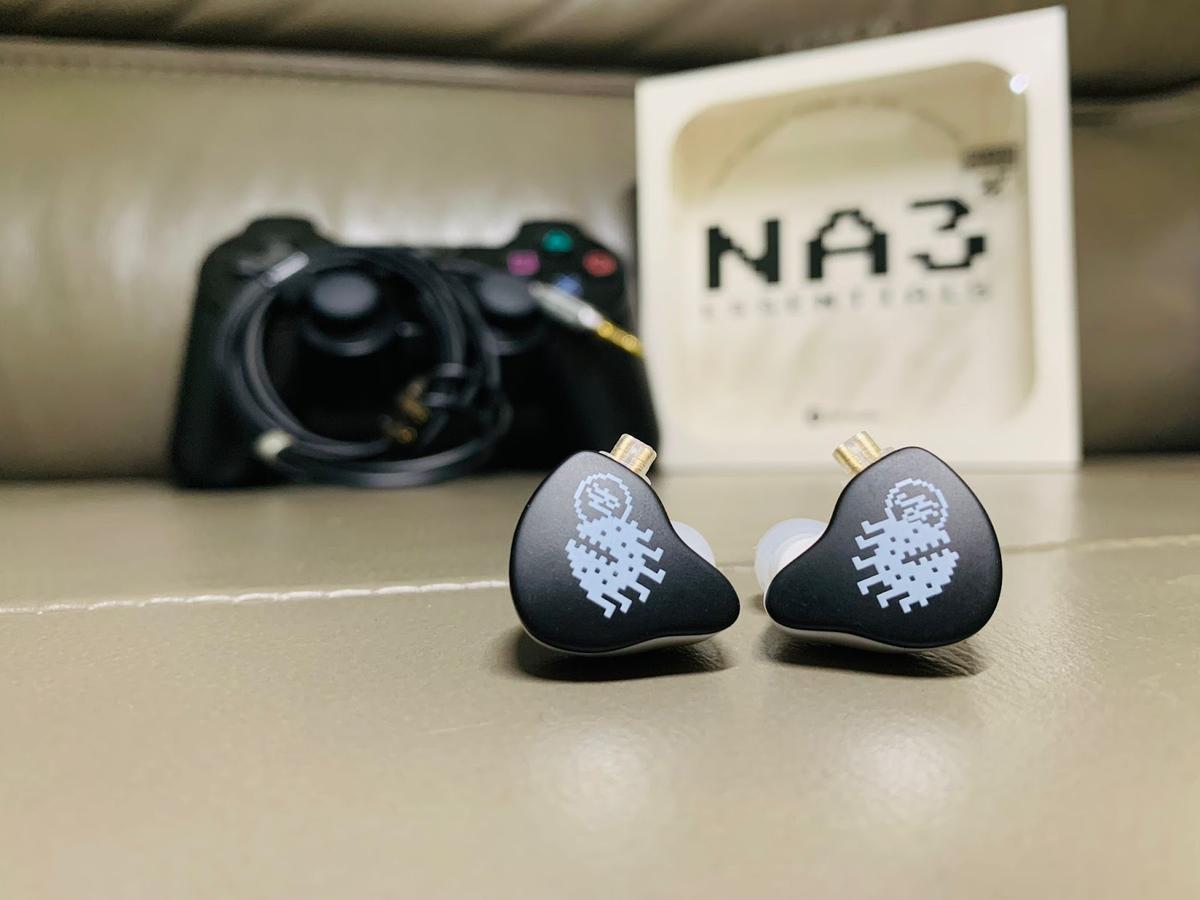The NA3 are a real throwback to yesteryears in terms of tuning and aesthetics!
Some years back, when CHI-FI was in its embryonic stages, IEMs were mostly V-shaped. KZ (Knowledge Zenith) was the prototypical pioneer that churned out decent-sounding, cheap, and accessible V-shaped products, though their IEMs could verge on shoutiness.
Over time, CHI-FI tuning evolved and became more refined with consumer input and even with collaborations with well-known reviewers such as Crinacle and Bad Guy Good Audio Reviews. Brands like Moondrop started to push out Harman-tuned sets, and other CHI-FI competitors caught on and muscled in on the Harman pie.
- Unique retro aesthetics
- Decent accessories
- Good build, light-weight, comfortable
- Easy to drive
- Good isolation
- Lush midrange, organic timbre
- Quite safely tuned, pretty all-rounded for most music genres
- Average technicalities
- Roll-off at upper treble
- Mid-bass bleed
- Very tip sensitive
- Microphonic, tangly cable
In the budget segment nowadays, many IEMs are tuned to a variant of the Harman curve, as this is considered a “safe” tuning. The NA3 we discuss today feature a mild V-shaped tuning that is more pronounced than the classical Harman curve but have some retro vibes added for fun!
Company Overview
NF Audio is the premium wing of Shenzhen Ningfan Acoustics. Conceived in 2014, NF Audio has come out with some well-regarded universal and custom IEMs such as the NA2, NA2+, NM2+, NE4, NF3U, and NF4U.
Technical Specifications
- Form: IEMs
- Drivers: 1 x dual cavity dynamic driver unit with high-polymer composite diaphragm
- Impedance (Ohm): 32 Ω
- Sensitivity (dB): 105 dB
- Isolation: 25 dB
- Frequency Response (Hz): 10 Hz – 40 kHz
- Removable Cable: Y
- Cable: 5N oxygen-free copper silver-plated cable
- Source Plug: 3.5 mm TRS, single-ended
- Cup/Shell Plug: 0.78 mm, 2-pin
Packaging
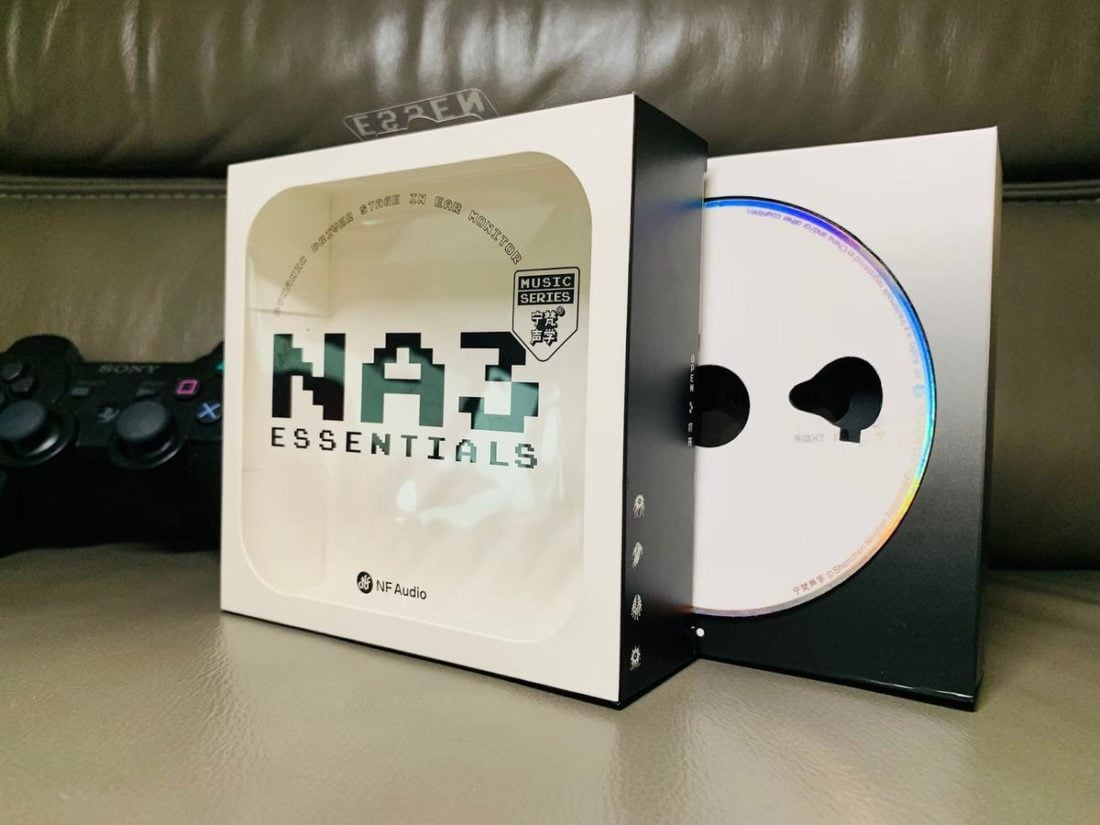
In the box
- NF Audio NA3 IEMs
- 4 pairs of “atmosphere” silicone ear tips (XS, S, M, L)
- 3 pairs of “balanced” ear tips (S, M, L)
- Cable
- Soft carrying pouch
The packaging features some old-school pixelated graphics reminiscent of the game-boy era!
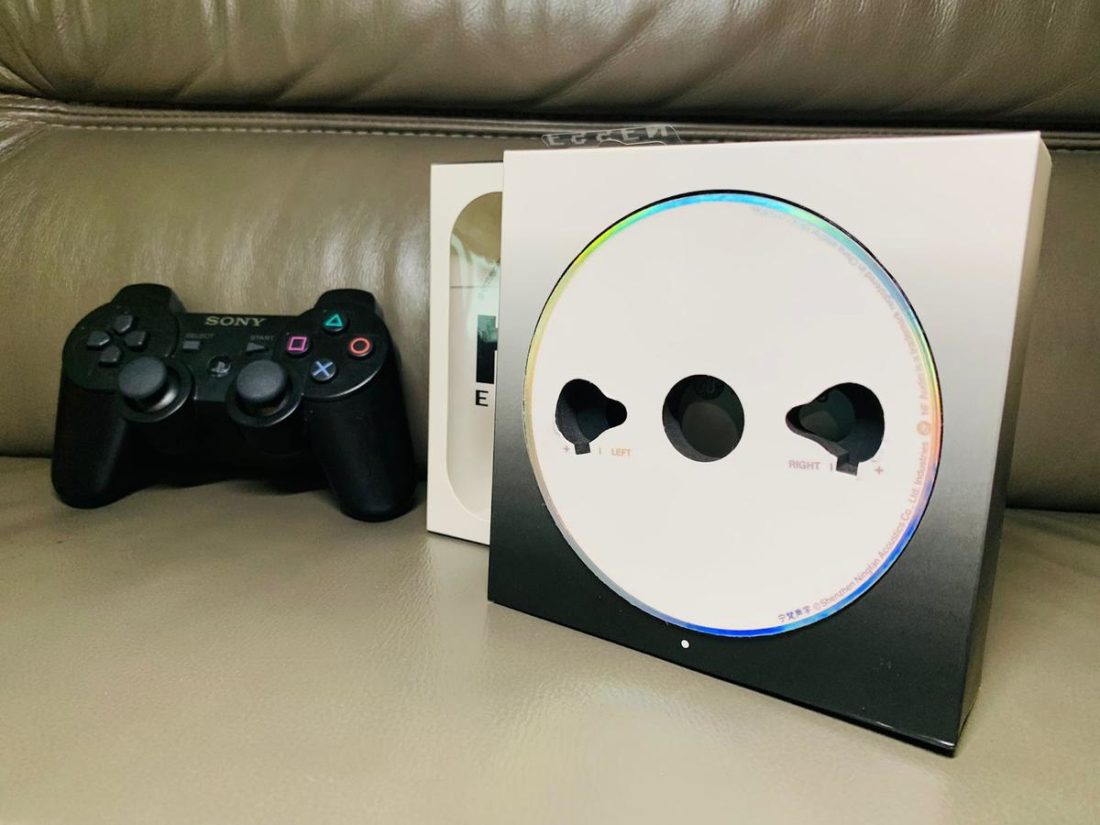
The accessories are pretty decent for a budget pair of IEMs.
The “balanced” tips are taller with a narrower bore compared to the “atmosphere” tips, which are shorter with a wider bore. The former give more bass, though with a trade-off of a smaller soundstage, whereas the “atmosphere” tips increase higher frequencies and enlarge the soundstage slightly.
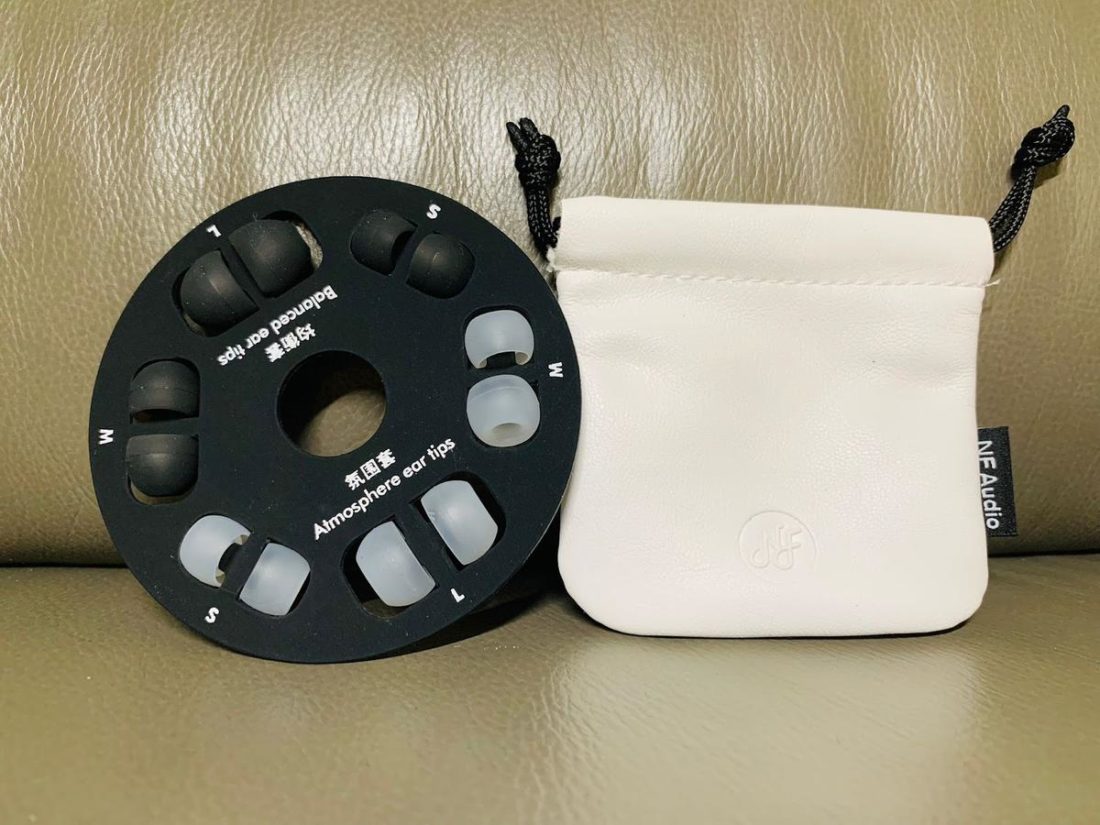
Sadly, no foam tips are included.
The soft carrying pouch is an elegant addition, though it might not save the internals from damage with a huge impact.
Cable
A 5N oxygen-free copper silver-plated cable is included. This cable is, unfortunately, quite tangly and thin and has substantial microphonics. There is a chin cinch to give stability, but overall, if one has an aftermarket cable lying about, it might be preferable to the stock cable in terms of haptics.
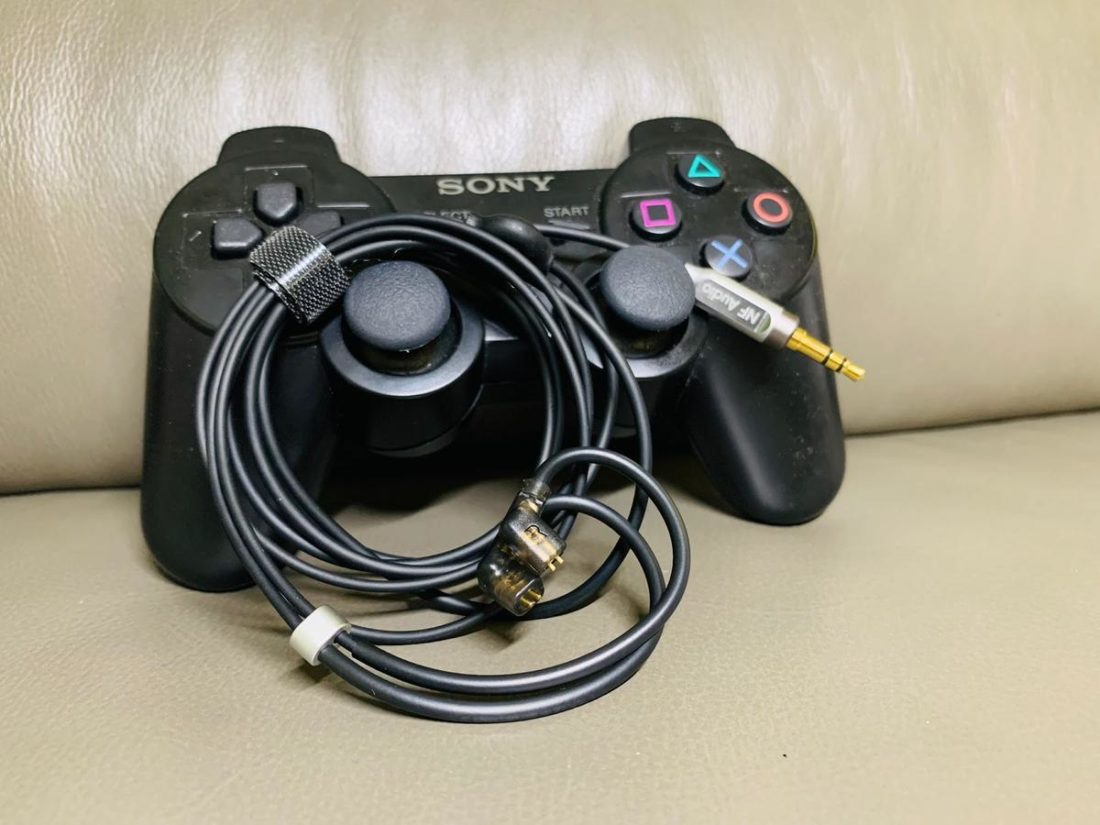
Design
The housings feature a pixelated retro monster design on each earpiece. One can choose a black, red, or white shell during ordering.
The shells are made of a polycarbonate material. Indeed, the earpieces are lightweight yet sturdy.
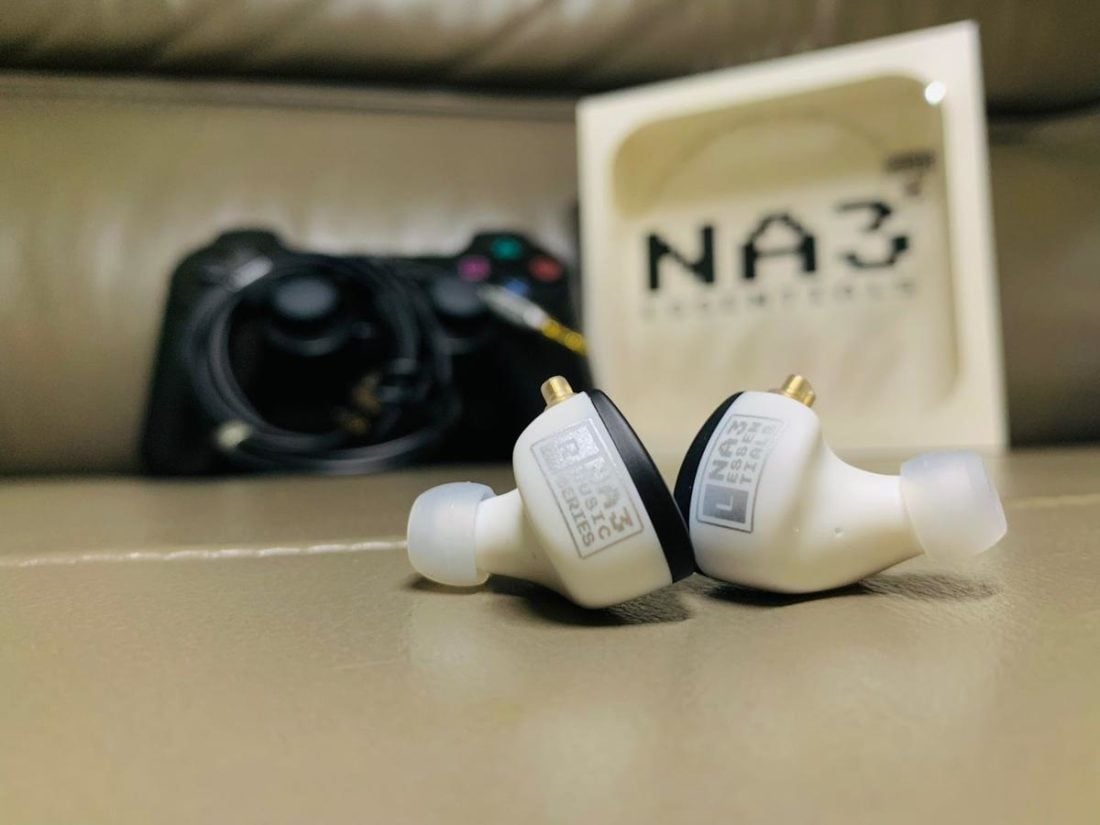
The NA3 are advertised to achieve 25 dB passive isolation. While putting the NA3 through their paces, the isolation is quite good – considering they are a vented pair – though perhaps 25 dB may be a bit of a hyperbole.
Comfort
With the aforementioned lightweight shells, a small concha protrusion, and ergonomic design, the NA3 are very comfortable. They are silky smooth with no weird protrusions.
I do not experience driver flex, but this may depend on the ear tips used and your ear anatomy.
Internals
While most traditional single DD sets only have a rear cavity, the NA3 buck the trend by utilizing a dual cavity design. This additional rear cavity purportedly controls air pressure more precisely, translating to more details and an expansive soundstage.
The high-polymer composite diaphragm used in the NA3 is advertised as lightweight, elastic, and low distortion. It features a high-precision integrated tuning PCB (Printed Circuit Board) with a high-performance neodymium magnet, which NF Audio says provides better timbral accuracy.
NF Audio NA3 Sound
The NA3 are pretty easy to drive. Amplification is not compulsory.
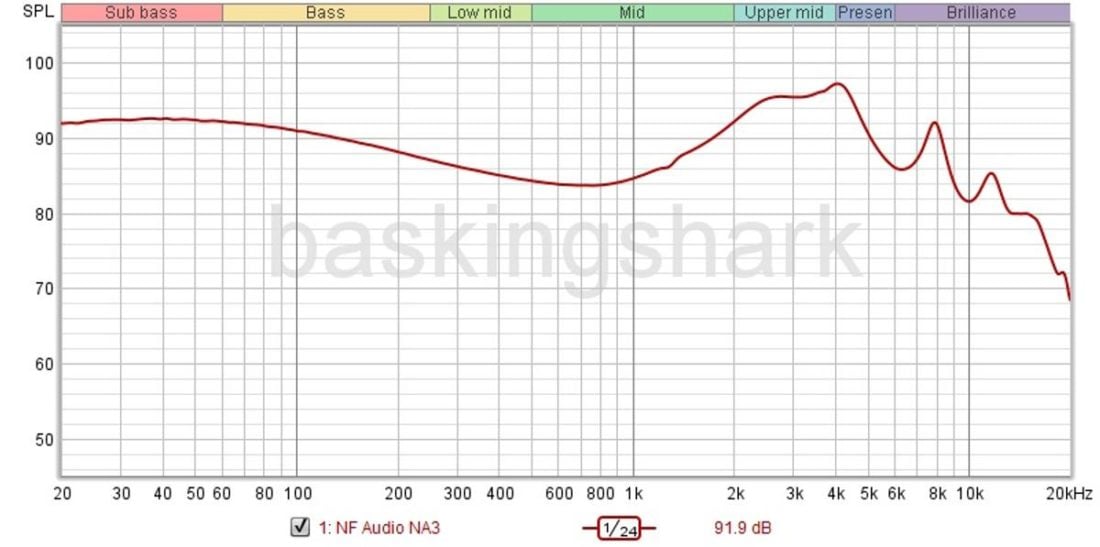
The NF Audio feature a bassy mild V-shaped tuning.
Bass
Bass quantity is north of neutral and focused mainly in the mid-bass, contrary to the graphs. There is a rumble at the sub-bass at bass-heavy tracks when it is called for, though the sub-bass extension is not as deep as some bona fide basshead sets.
The mid-bass bleeds and is on the slower side with the “balanced” tips, but bass speed and quality improve slightly with the “atmosphere” tips, though at the expense of bass quantity.
The bass texturing and speed are about average even with tip rolling, and the mid-bass bleed obscures some bass details.
Midrange
The lower midrange is slightly depressed (more so with the “balanced” tips), but overall the NA3 do not have as recessed a midrange as some old-school V-shaped CHI-FI sets. The aforementioned mid-bass bleed does encroach into this area, but it adds lushness and gives a lot of warmth, and an analogue (retro) feel to the music.
On the flip side, transparency and clarity in the midrange suffer due to the mid-bass bleed. Detail-freaks might find some fine nuances in complex tracks to be missing.
The upper midrange is forward but is relatively non-fatiguing (contrary to the graphs once more) – only on rare occasions can this area verge to spicy with louder volumes (Fletcher Munson curve) or poorly recorded material.
Treble
The lower treble continues on from the boosted upper midrange and climaxes at the 4kHz region. It drops off rapidly after that, and even with the “atmosphere” tips, the NA3 actually are on the verge of being dark in the upper treble.
As a consequence, this is a safe treble, but micro-details and sparkle and air are not the most pronounced. Sibilance is mild, and treble-heads might need to look elsewhere.
Timbral accuracy for acoustic instruments is quite organic on the NA3, though with the “atmosphere” tips installed, vocals may come off as nasal. For example, on Diana Krall’s Autumn in New York, her voice comes across as “chalky” when she hits the higher registers.
As mentioned above, ear tips also affect soundstage perception on the NA3. With the “balanced” tips, the soundstage is compressed and is bang average in all three dimensions. With the “atmosphere” tips, the soundstage opens up slightly (width more than height and depth), but even so, the soundstage pales in comparison against some other single DD competitors.
Imaging and instrument separation are decent for a sub-$100 USD single DD set. Clarity and micro-details are a bit veiled due to the mid-bass bleed and lack of treble sparkle. Technicalities improve slightly with the “atmosphere” tips installed, but overall I would class the NA3 as having average technicalities at this price bracket: i.e., nothing ground-breaking in this area.
The NA3 are safely-tuned, with a very analogue signature. They are not the best option for critical listening or analysis of music, though.
Comparisons
We will compare the NA3 against other sub-USD$100 single DD sets. Hybrids and pure BA IEMs were left out of the comparison as the different transducer types have their own pros and cons.
Vs. Moondrop Aria 2021
The Aria 2021 follow the head-related transfer function (HRTF) frequency curve.
The Aria 2021 and NA3 are quite similar in technicalities – both are about average in this department and are not technical beasts.
The Aria 2021 have slightly less bass quantity but more upper treble, whereas the NA3 have more upper mids. Timbre is quite natural on both sets.
The Aria 2021 have multiple complaints of the paint peeling/bubbling off the shells, but they do come with a waifu packaging to make up for it!
Vs. Tripowin Olina
The Olina are tuned closely to the Harman curve. They are a league or two ahead of the NA3 in technical performance, boasting better soundstage, clarity, edge definition, micro-details, imaging, and instrument separation.
However, the Olina are more fatiguing and shouty at the lower treble region, with the NA3 more laid back and not so aggressive in comparison. Timbre is a bit more natural on the NA3.
Vs. Tin T3 Plus
The Tin T3 Plus are another V-shaped set. They boast slightly better soundstage, imaging, and instrument separation than the NA3, but the NA3 have a tinge better timbral accuracy.
Bass is a bit tighter on the NA3 with the “atmosphere” tips, but both are not the most textured in the bass, with bass lines coming off as “one-noted” on both pairs.
Vs. Dunu Titan S
The Titan S are a neutral-bright pair. The Titan S shade them regarding technicalities with slightly better clarity, micro-details, and imaging. Timbre is quite well portrayed on both sets, though the Titan S have a hair less note weight. Soundstage is a wash between the two pairs.
Where to Buy
Conclusion
Don’t judge a book by its cover. Or rather, don’t judge an IEM by its shell. Sporting retro aesthetics and packaging, the NA3 are quite safely tuned, in contrast to their funky appearance.
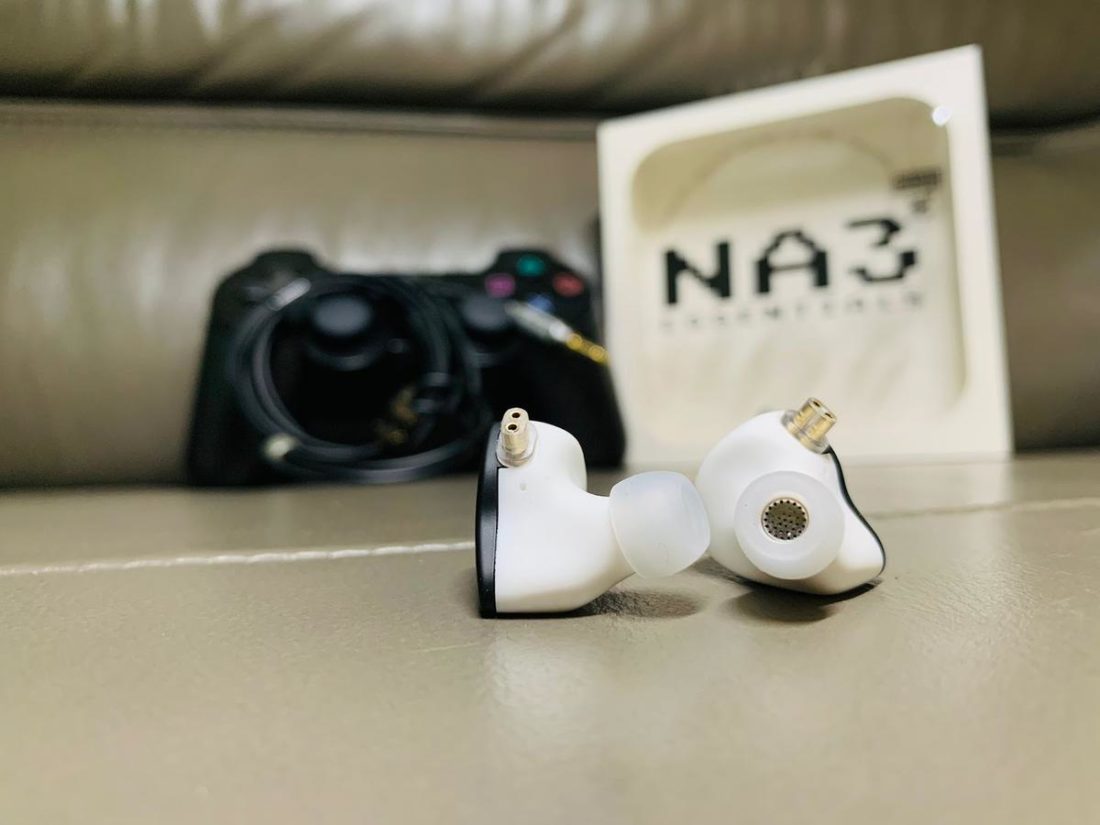
The NA3 are relatively affordable (at sub-$70 USD), have decent accessories, are easy to drive, and have a lush midrange and natural timbre. They are a pair for chilling and relaxing to music rather than critical listening.
There are some nitpicks, though: technicalities are merely average, the cable is not the best haptically, and there is upper treble roll-off. In addition, the NA3 are very tip sensitive, so different ear tips can provide quite a night-or-day difference to the sound.
The NA3 do more things right than wrong – they are a more than decent pair that fairs at least average in most departments. But they lack that additional pizazz that would catapult them to greatness.
Truly, it is tough to stand out in the ultra cut-throat sub-$100 USD single DD market, with new releases coming out weekly. A new hype-train is just around the corner, and it is no exaggeration to say that being average (or even above average) is as good as getting left behind at the station.
Do I recommend the NA3? Yes, they are a worthwhile consideration for beginners searching for a safely-tuned IEM with no major flaws. However, if one already owns the well-regarded single DD trinity of the Aria 2021, Olina, and/or Titan S, the NA3 are a sidegrade or marginal downgrade, and do not give much value-add.
Having said that, the NA3 are quite decent at providing a warm and analogue sound, and I look forward to NF Audio’s next iteration. Hopefully, their next release can push the boundaries of the budget arena and bridge that additional gap to greatness!
